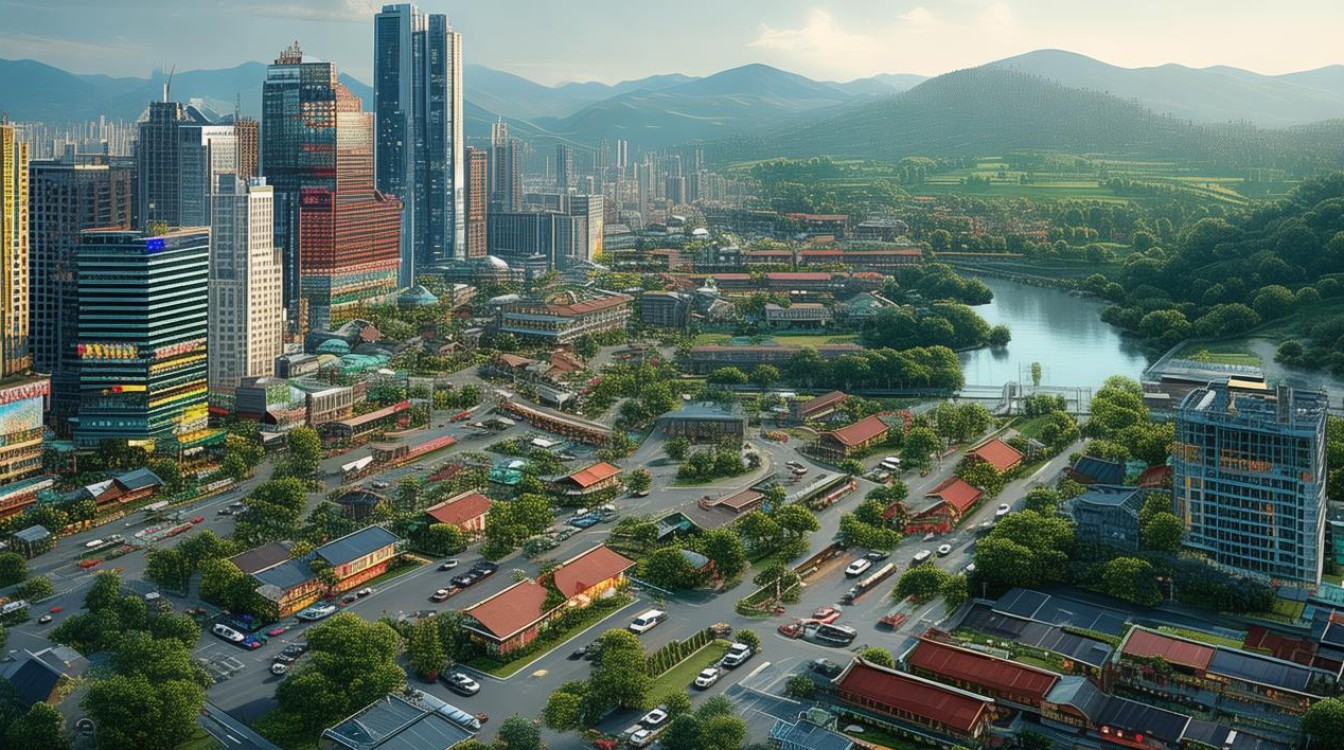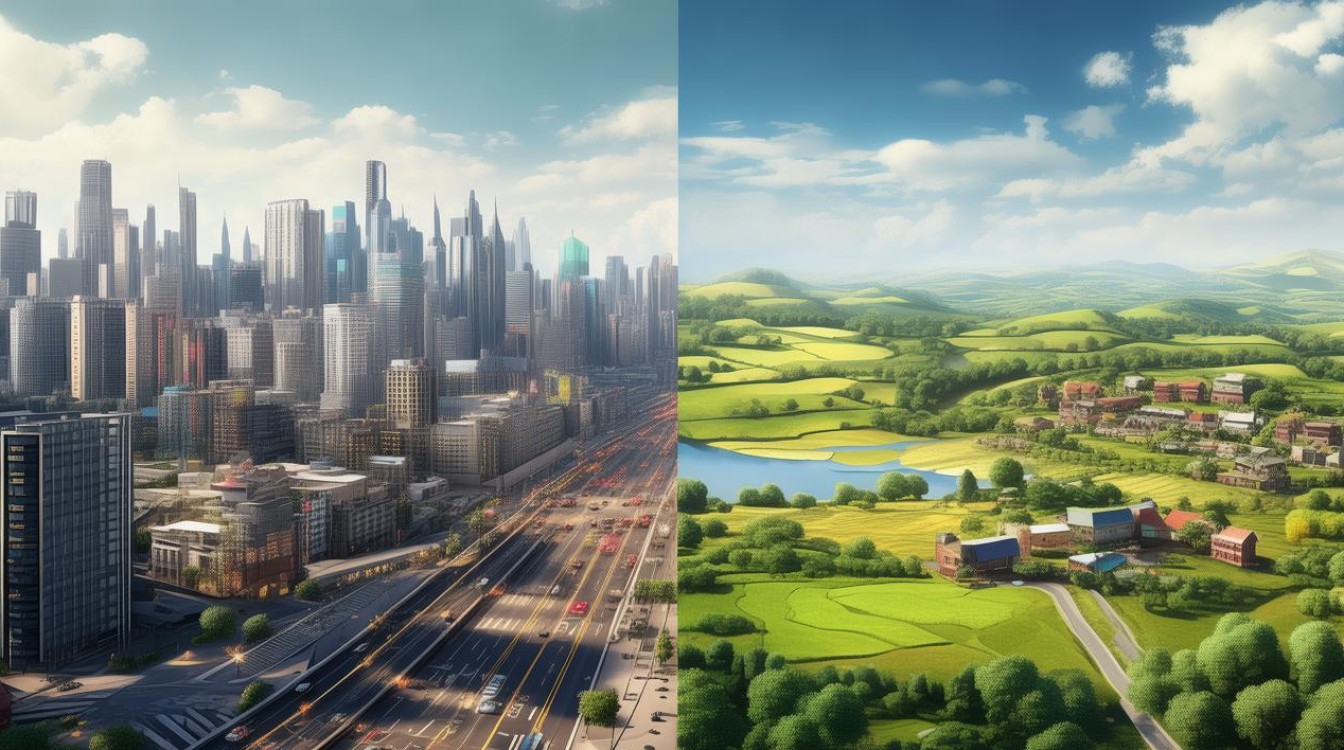The distinction between urban and rural areas has long been a topic of discussion in sociology, economics, and public policy. While cities are often seen as hubs of opportunity, innovation, and cultural diversity, rural regions are frequently associated with tradition, slower-paced living, and closer-knit communities. This essay explores the key differences between urban and rural life, examining factors such as infrastructure, education, employment, and quality of life.

Infrastructure and Accessibility
One of the most noticeable contrasts between urban and rural areas lies in infrastructure. Cities boast well-developed transportation networks, including subways, buses, and ride-sharing services, making commuting efficient. High-speed internet, modern healthcare facilities, and extensive retail options are readily available. In contrast, rural areas may lack reliable public transport, forcing residents to depend on personal vehicles. Internet connectivity can be inconsistent, and access to specialized medical care often requires travel to urban centers.
Despite these challenges, rural areas offer advantages such as lower population density, cleaner air, and more spacious living environments. The trade-off between convenience and tranquility remains a defining feature of the urban-rural divide.
Education and Opportunities
Education systems in urban and rural settings differ significantly. Urban schools typically have more resources, including advanced technology, extracurricular programs, and highly qualified teachers. Universities and vocational training centers are concentrated in cities, providing students with greater academic and career opportunities.
Rural schools, however, often face funding shortages and teacher shortages, limiting the range of subjects and activities available. Yet, smaller class sizes can foster stronger student-teacher relationships, and community involvement in education tends to be higher. For families, choosing between urban and rural education involves weighing access to opportunities against the benefits of a close-knit learning environment.

Employment and Economic Prospects
Economic opportunities are another critical factor in the urban-rural divide. Cities attract businesses, startups, and multinational corporations, offering diverse job markets with higher salaries. Industries such as finance, technology, and entertainment thrive in urban centers, drawing young professionals seeking career growth.
Rural economies, on the other hand, are often driven by agriculture, forestry, or small-scale manufacturing. While these sectors provide stability, they may lack the dynamism and upward mobility found in cities. Remote work has begun to bridge this gap, allowing rural residents to access urban job markets without relocating. Still, the disparity in economic vibrancy remains a significant consideration for job seekers.
Quality of Life and Social Dynamics
Quality of life is subjective but profoundly influenced by the urban-rural divide. Urban dwellers enjoy cultural amenities like theaters, museums, and restaurants, along with the convenience of 24/7 services. However, the fast-paced lifestyle can lead to stress, noise pollution, and a sense of anonymity.
Rural living offers a slower rhythm, stronger community bonds, and proximity to nature. The absence of traffic congestion and overcrowding contributes to mental well-being, though limited entertainment options and social isolation can be drawbacks. Personal preferences play a decisive role in determining which environment aligns with individual values.

Environmental Impact
Urbanization has undeniable environmental consequences. Cities consume vast amounts of energy, generate substantial waste, and contribute to air pollution. Efforts to mitigate these effects include green building initiatives and public transportation upgrades.
Rural areas, with lower population densities, generally have a smaller ecological footprint. Sustainable farming practices and renewable energy projects are more feasible in these regions. Yet, rural communities also face environmental challenges, such as water scarcity and deforestation, requiring targeted conservation efforts.
Bridging the Gap
Addressing the urban-rural divide requires balanced policymaking. Investments in rural infrastructure, education, and healthcare can reduce disparities while preserving the unique character of countryside living. Urban planners must focus on sustainability to ensure cities remain livable.
Technology plays a pivotal role in narrowing the gap. High-speed internet expansion enables rural entrepreneurs to compete in global markets, while telemedicine improves healthcare access. Encouraging urban-rural migration through incentives can also foster cultural exchange and economic diversification.

The urban-rural divide is not merely a matter of geography but a reflection of differing lifestyles, opportunities, and challenges. Both settings have distinct advantages, and the ideal choice depends on individual priorities. Rather than viewing urban and rural areas as opposites, society should strive for integration, leveraging the strengths of each to create a more equitable future.
As we move forward, recognizing the value of both urban and rural communities will be essential. Policymakers, businesses, and individuals must collaborate to ensure that progress benefits all, regardless of location. The goal should be a world where everyone has the freedom to choose their preferred way of life without sacrificing opportunity or well-being.

